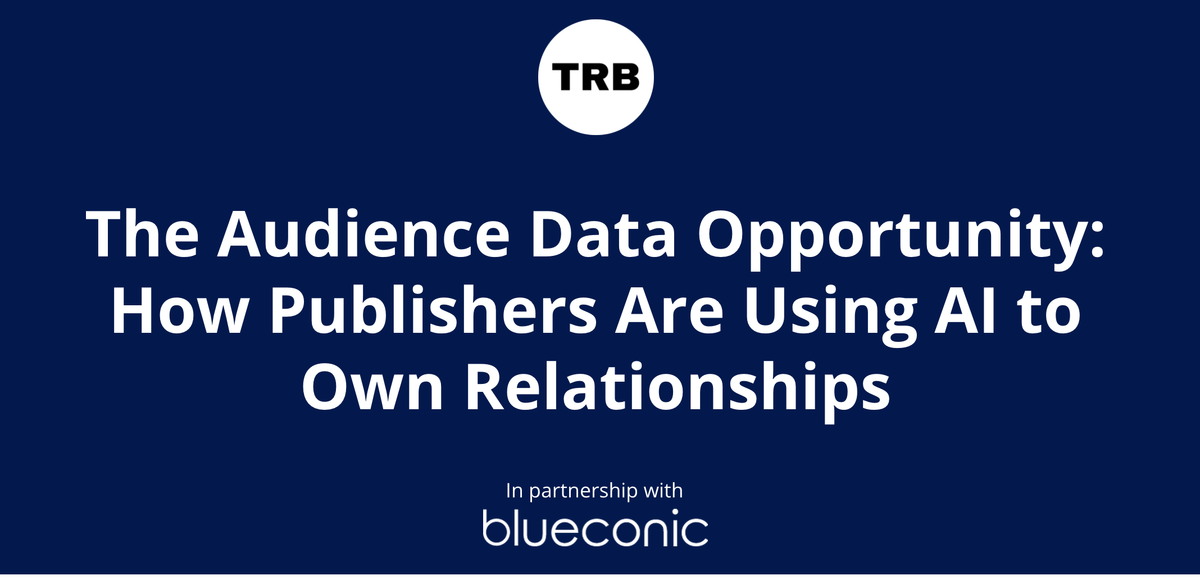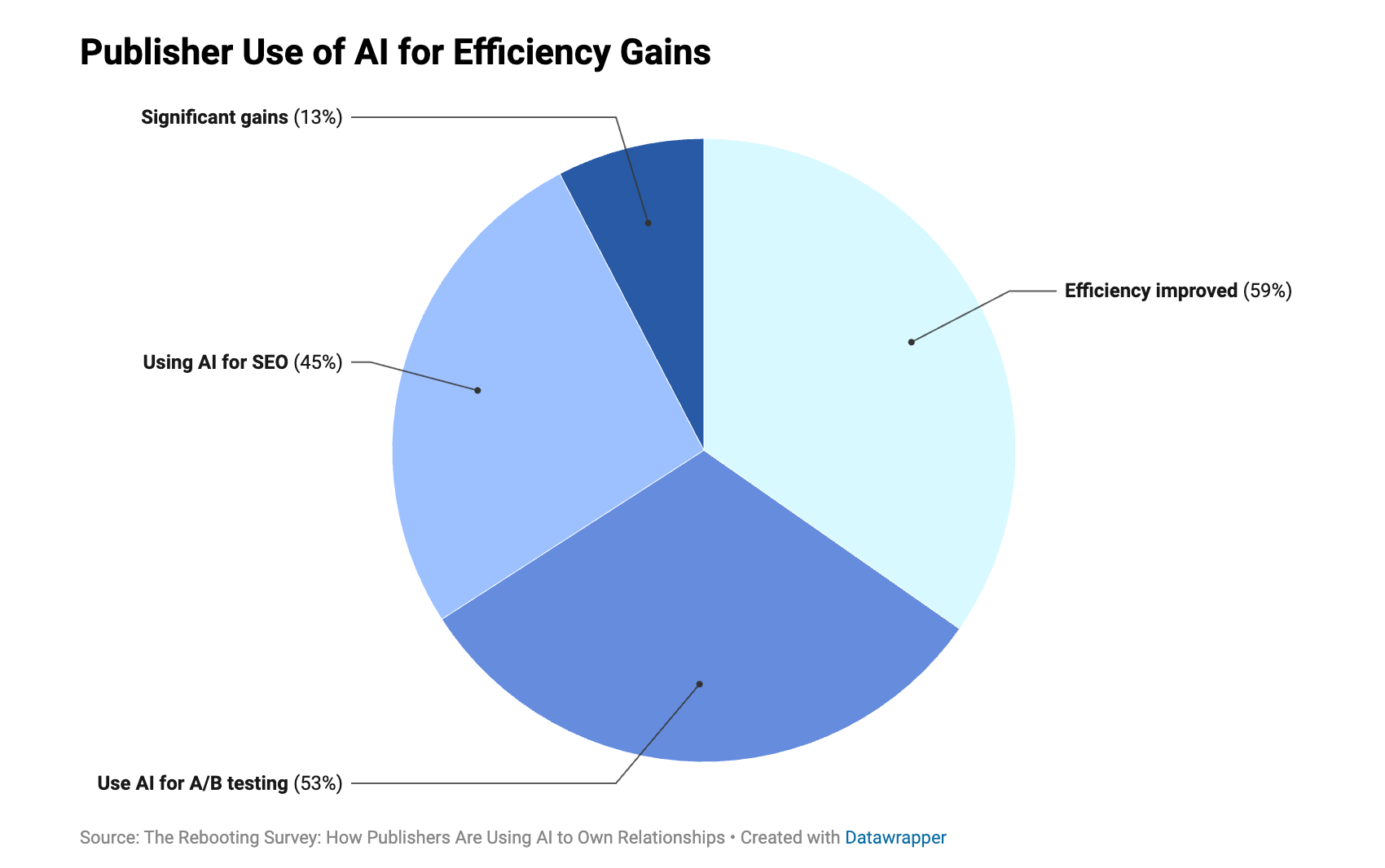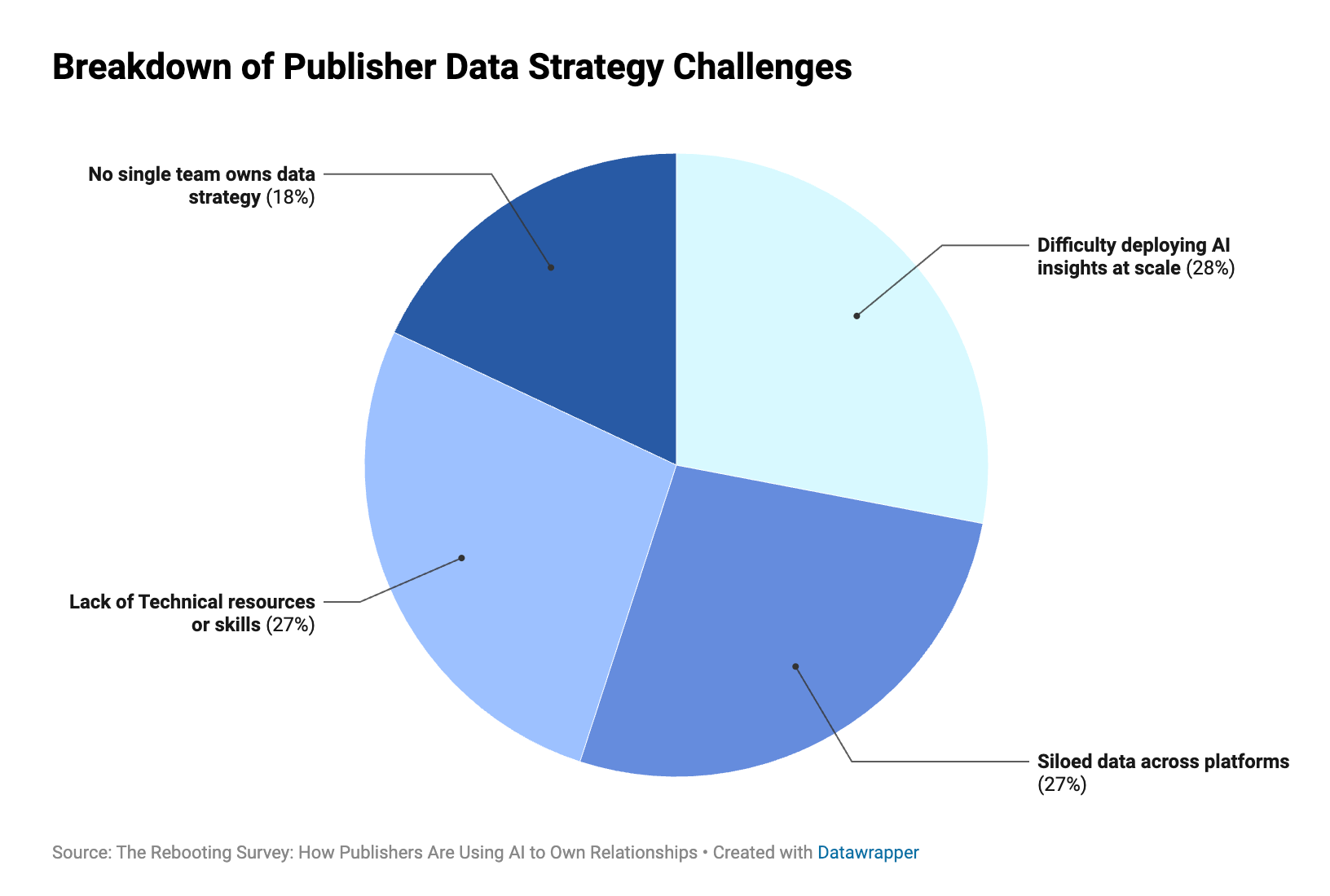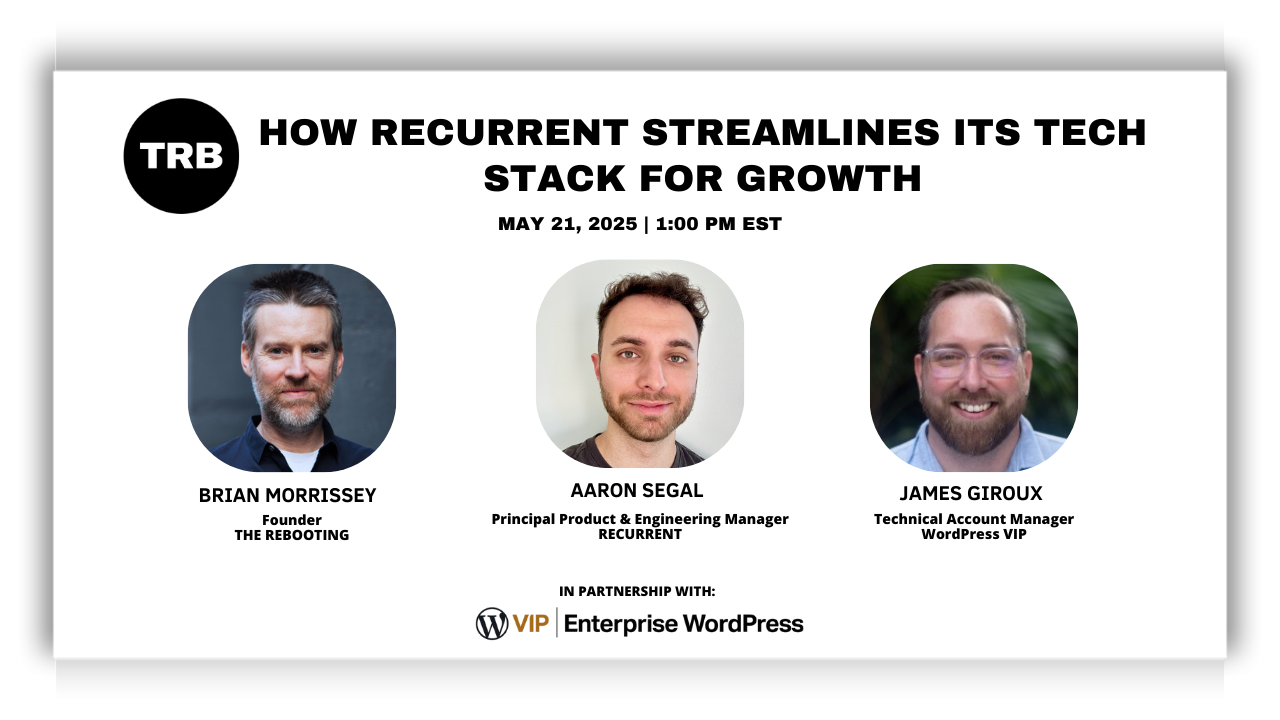The messy middle of AI adoption
New TRB research finds an ambition-to-execution gap

In today’s newsletter:
- New research from The Rebooting and BlueConic finds that publishers are stuck in an ambition-execution gap when it comes to implementing AI
- A conversation with Dynamo CEO Nicholas Carlson on skipping words on webpages for video on YouTube
- Reminder: Join us next week for a deep dive into how Recurrent migrated its tech stack without going insane

Cross-channel platform exclusively for publishers

You don’t need a huge team or tech stack to market smarter. Sailthru by Marigold and Marigold Grow helps media brands connect with readers using personalization, automation, and built-in tools to grow audiences with zero-party data. Whether launching a new newsletter or building a subscriber journey, this is marketing built for how publishers work.
The messy middle of AI adoption
The arrival of generative AI has forced publishers to confront change on two fronts: externally, through the erosion of search referrals and shifting audience expectations; and internally, through the mounting pressure to drive efficiencies and develop new products with fewer resources. The instinct is to move fast, but what’s emerging instead is a more measured reality.
In our latest research, conducted in collaboration with BlueConic, we found that AI’s biggest impact in media isn’t in shiny new interfaces or experimental chatbots. The real gains are operational: incremental, behind-the-scenes improvements to how teams structure, process, and activate their audience data.
If there’s a prevailing mood around AI inside media companies, it’s one of cautious optimism strained by operational disarray. Nearly every publisher we surveyed or spoke with acknowledged that AI has the potential to reshape their business, but most also admitted they haven’t figured out how to turn potential into execution.
According to The Rebooting’s research:
- 58% of publishers are using or planning to use AI for audience insights
- Only 13% say those efficiency gains have been significant
- 33% cite siloed data systems as a primary obstacle to making AI work across the organization

The disconnect was echoed at last week's Media Product Forum, where one publishing executive described the current state of AI implementation as a “pile-on effort,” with scattered experiments bolted onto legacy workflows and no clear sense of ownership. “The wins are all backstage—time saved on routine tasks. The curtain hasn’t opened on new value creation,” they noted.
Even foundational elements like setting success metrics are missing. The majority of respondents said they weren’t tracking outcomes in any structured way, and several noted that AI projects were largely informal efforts being led by curious individuals, not coordinated initiatives.

“The problem isn’t that publishers lack data, it’s that no one owns the strategy,” said Will Barker, principal customer success manager at BlueConic.
For all the attention paid to content-generation tools, the most meaningful role AI is playing inside media organizations isn’t automation. It’s orchestration. The biggest gains aren’t coming from replacing human tasks, but from helping existing systems talk to each other better and surfacing actions that were previously buried in silos.
According to the report:
- 48% of publishers are using or planning to use AI for audience segmentation or churn reduction
- 39% say audience insight is now a top vendor selection factor
- 35% still say they struggle to deploy AI insights at scale
At the Media Product Forum, one participant described how AI adoption picked up only after it was embedded inside existing tools—CMS platforms, spreadsheets, project management systems. “Adding more tools to someone’s job makes it harder,” they said. “But integrating AI into the systems people already use—that’s where you get actual adoption.”
This shift from automation to orchestration is already paying off in under-the-radar ways. One example cited in the report: a publisher that used AI to fine-tune its paywall logic, identifying the right kind of offer to show different users based on behavioral modeling. Not flashy, but it improved conversion without increasing the team’s workload.
“Even asking the right question requires fluency—and most people aren’t fluent," said Gilad Lotan, head of AI, data science and analytics at BuzzFeed. "If you’re not close to the data, it’s really hard to even formulate what you’re trying to find.”
Other highlights from the report:
- How publishers are restructuring their audience data strategies
- Where AI is delivering real value—and where it’s still falling short
- The cultural and organizational blockers slowing down adoption
- The shift from insight to action across tech stacks and teams
- How leading publishers are rethinking personalization and segmentation
Nich Carlson’s pivot to video
Nicholas Carlson spent seven years at the editorial helm of Business Insider – let’s skip over the Insider years – and built one of the most formidable digital media brands of the last generation. BI played the traffic game well and earned a legendary exit to Axel Springer.
It’s telling to me that Nich’s new venture, Dynamo, is skipping the words on webpages approach in favor of video. Rather than rely on search for traffic, Dynamo will operate in the YouTube ecosystem (and on LinkedIn) that has proven fertile ground for sustainable media models. Instead of breaking news, which is in Nich’s DNA, Dynamo is opting for evergreen content that will produce library value that extends its shelf life – and, as an added benefit, explaining why American trucks suck compared to European trucks is not going to get Bill Ackman to launch a Holy War against you.
“I’m a little skeptical of web pages,” Nich told me. “That business is in trouble. We’re going to be a video company.”
This is noteworthy because Nich is was a text guy. I got to know him as a scrappy, scoops-obsessed reporter. His 2013 magnum opus on Marissa Mayer was a turning point for BI to shift in perception from an aggregator to journalistic outfit.
He got the video bug in building Insider’s version of a distributed video operation with lots of cheese and bagel videos that did well on Facebook and other platforms. BI ended up building a formidable YouTube presence with 10 million subscribers.
Dynamo’s approach focuses initially on high-end business explainer videos with “Business Explains the World.” Nich and I discussed what it means to start from scratch without legacy baggage and where the real growth opportunities still exist.
Topics covered:
- Why YouTube is TV now
- Evergreen video as a business model
- Applying unit economics to media

Rebuilding a tech stack while continuing to ship product is no small feat. On Wednesday, May 21 at 1pm ET, I’ll be joined by Recurrent’s head of product and engineering, Aaron Segal,and James Giroux, technical account manager at WordPress VIP, for a practical look at how his team pulled off a multi-brand CMS migration without pausing innovation.
In this interactive session, you’ll see how Recurrent reduced its maintenance load, enabled cross-brand design systems, and modernized its stack for speed and flexibility. Aaron will walk through how reusable components and a parent/child theme system accelerated launches—and how open-source infrastructure made experimentation easier, not riskier.
If you cannot make the session live, we’ll send you a replay link as well as a cheat sheet summary with the key takeaways.
Thanks for reading. Send me a note with feedback by hitting reply.


